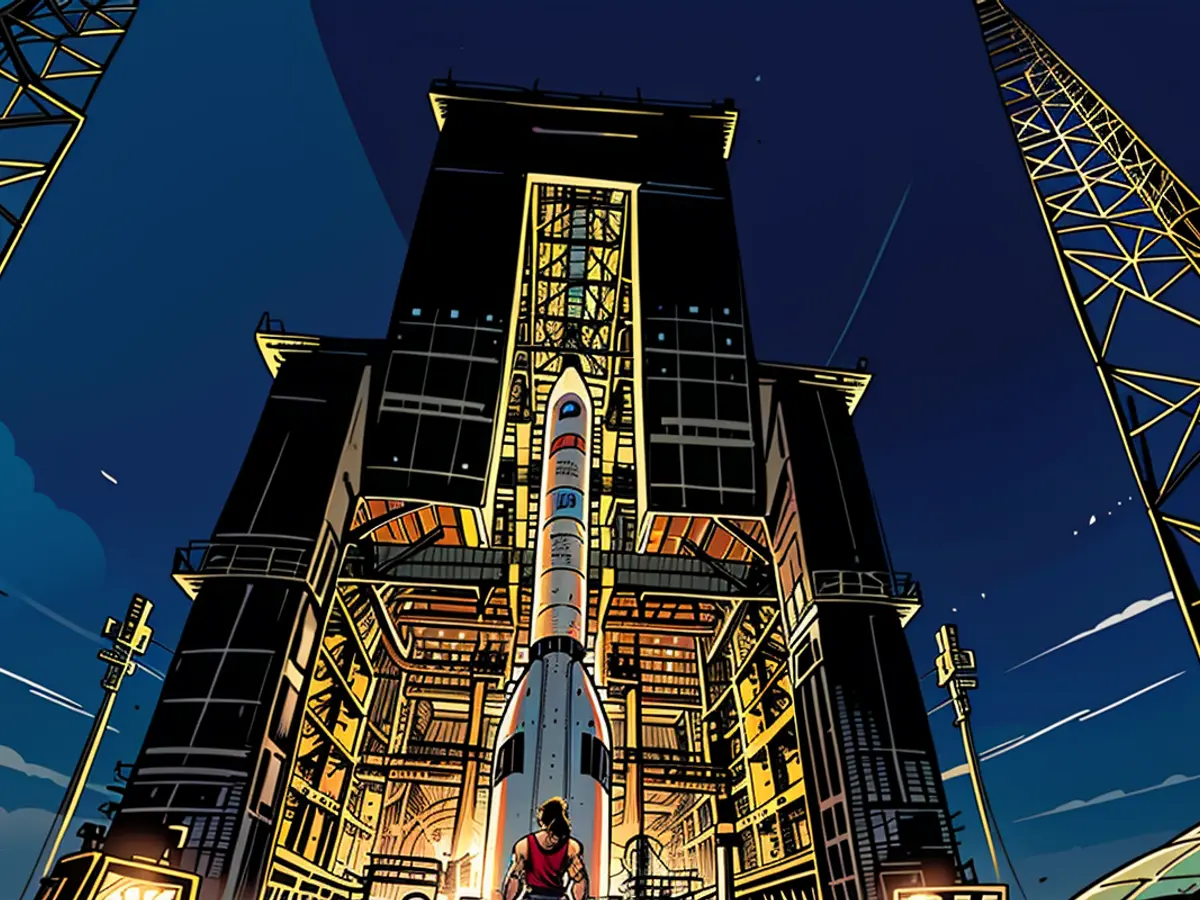Chronology - After a long wait: Ariane 6 to take off
After a decade, it's finally happening: The Ariane 6 carrier rocket is expected to take off for the first time from the Kourou Spaceport in French Guiana. This marks the retirement of its predecessor, Ariane 5, which has been in service since 1996 and can reach heights of up to 52 meters and carry nearly ten tonnes of payload into space. The new version is intended to be modular and robust.
2010: Construction Approval
Germany and France plan to build the Ariane 6 together. The new rocket is expected to have four engines, each with approximately 135 tonnes of solid fuel. However, the construction is facing challenges. Germany, one of the main ESA (European Space Agency) funders, initially wants to focus on upgrading the Ariane 5.
2013: Ariane 6 Takes Shape
According to the European Space Agency (ESA), the new carrier rocket should receive four engines, each with around 135 tonnes of solid fuel. However, the construction is uncertain. Germany wants to first continue developing the Ariane 5 as a primary contributor to the ESA.
2015: ESA Awards Development Contract
The ESA awards Airbus Safran Launchers (ASL) the contract for the development of Ariane 6. The contract is worth 2.4 billion Euros. In the following year, a second financial tranche of 1.7 billion Euros is granted. The goal is to transport satellites cheaper into space than with the Ariane 5.
2019: Launch Planned for July 2020
Ariane 6 is expected to launch for the first time in July 2020, according to Arianespace.
2020: Delay in Launch Due to High Costs
The coronavirus pandemic results in production delays and testing interruptions. At the same time, it causes high costs. The launch of the rocket is initially postponed to 2021, later to 2022 due to the pandemic.
2021: Additional Funding for the New Ariane-6 Rocket
Germany and France provide additional funding. In November, the first upper stage of the Ariane 6 travels from Bremen to the Kourou Spaceport.
2022: Launch of the Carrier Rocket Postponed to 2023
After a successful hot-fire test of the complete upper stage in early October, the planned first launch of the Ariane 6 is postponed to the end of 2023 or even 2024. New customer requirements and the need for additional tests extend the development timeline.
2023: Further Delay in Rocket Launch
The last Ariane 5 launch into space takes place in early July. Since then, the ESA has lacked its own transporters to launch large satellites into space. Since a failure of the Vega C during its first commercial flight in December 2022, this rocket is also grounded for the time being.
2024: First Components Arrive in French Guiana
The main and upper stages of the Ariane 6 arrive in Kourou in February. The first launch into space is scheduled for July 9.
- The Kourou spaceport in French Guiana, managed by Arianespace SA, is the expected launch site for the Ariane 6 carrier rocket from Germany and France.
- The European Space Agency (ESA) has announced that the new Ariane 6 will be launched from the Spaceport in Kourou, a territory of France located in South America.
- The German government, being one of the main contributors to ESA, initially proposed waiting on the construction of Ariane 6 due to ongoing development of Ariane 5 at the Kourou spaceport in Europe.
- In spite of the challenges, the Kourou spaceport in French Guiana remains the primary location for the launch of the next-generation Ariane 6 carrier rocket, developed by Arianespace SA.
- The German and French governments ultimately provided additional funding, enabling construction and development of the Ariane 6 to continue in Kourou spaceport, French Guiana.
- In light of the pandemic and production delays, the first launch of the Ariane 6 spacecraft is expected to take place from the Kourou spaceport in French Guiana around 2023 or even 2024.
- As the completion of the Ariane 6 progresses at the Kourou spaceport, France and Germany hope that the new carrier rocket will contribute significantly to economic growth and scientific advancements in Europe and beyond.







